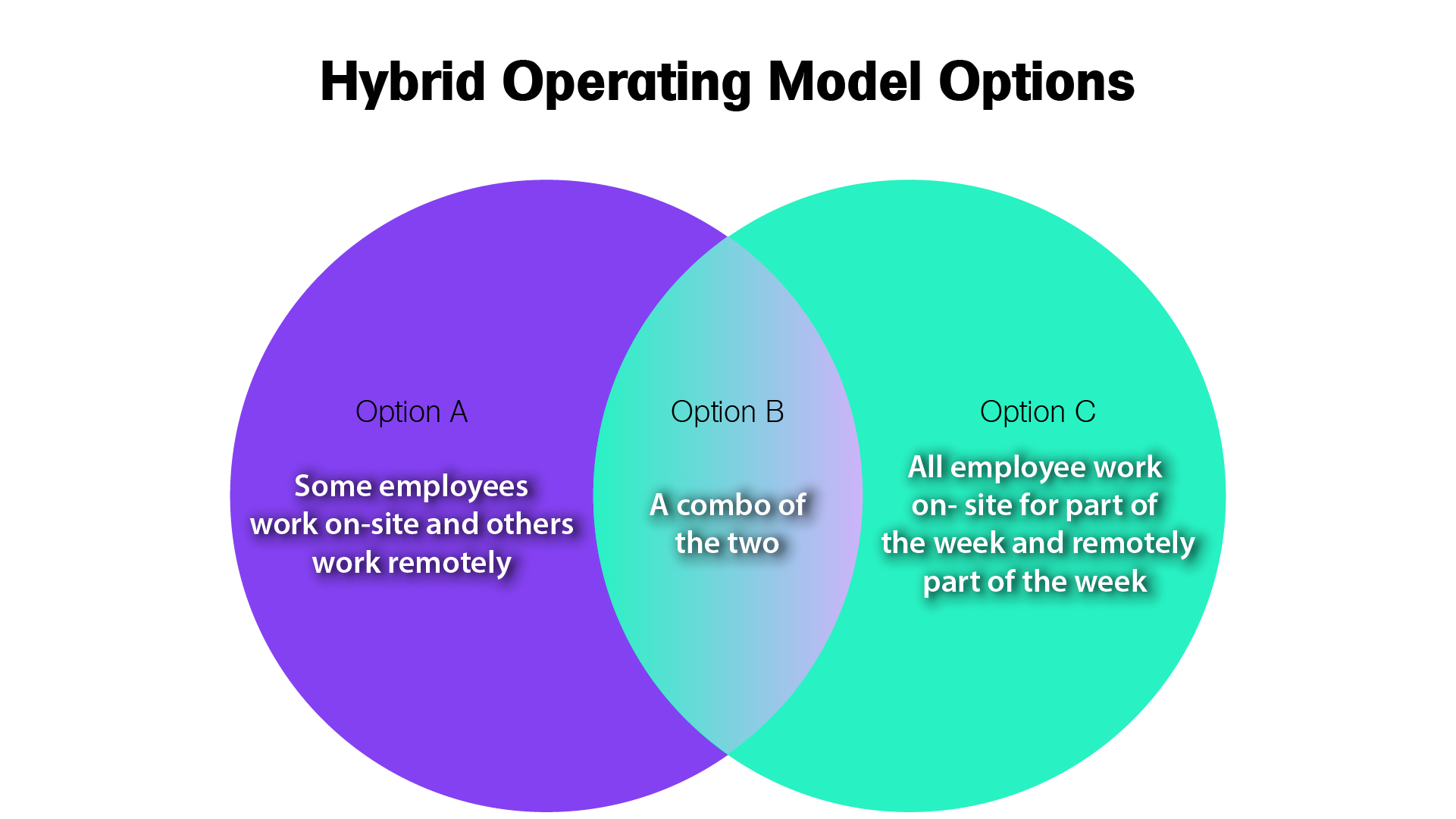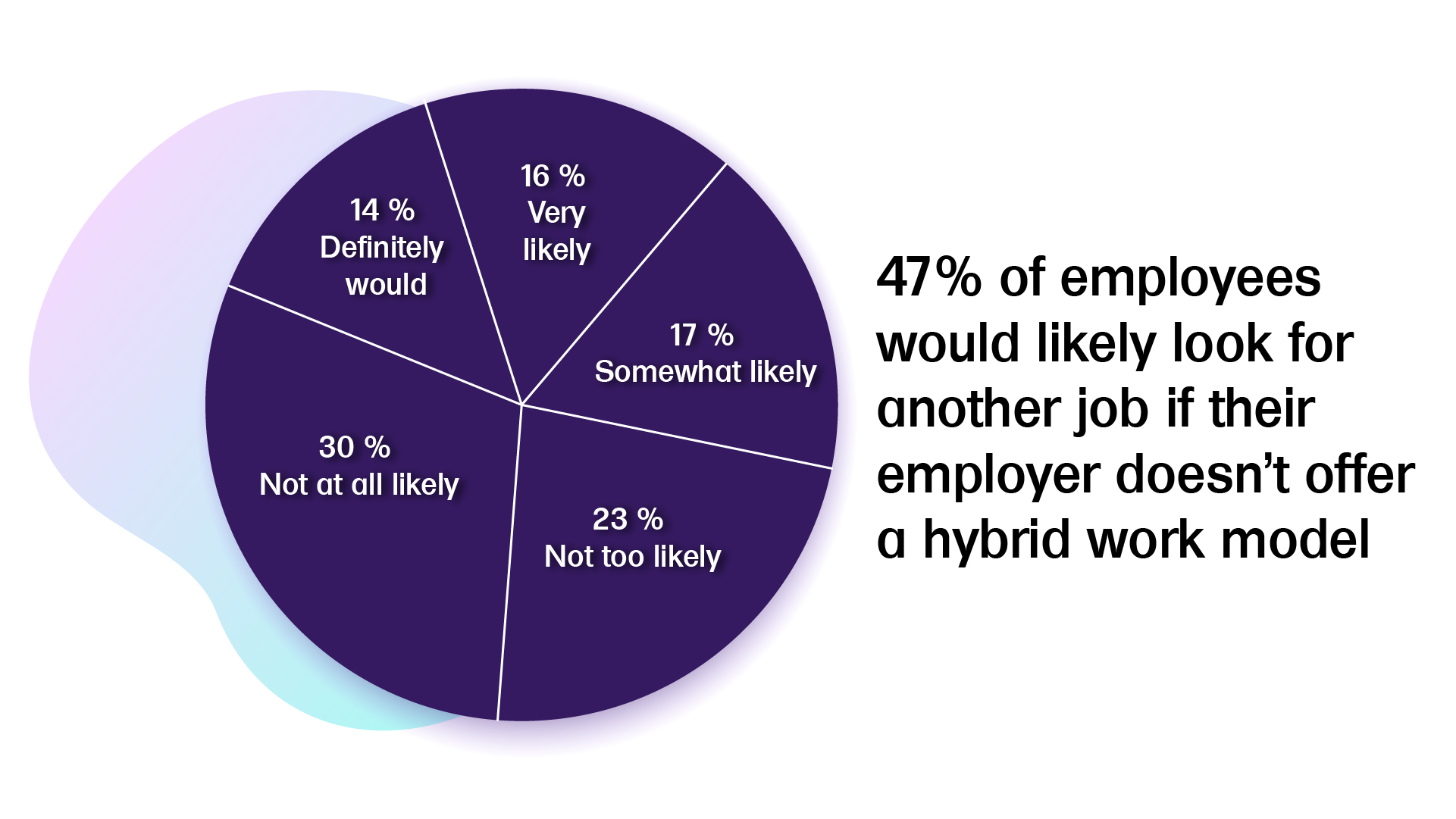Hybrid Work: What is hybrid and why do employees want it?
Hybrid work is a drastic departure from the traditional work model. In this post, we’ll explore what a hybrid work model is and how you can transition to one smoothly.
The traditional work model is significantly changed by hybrid working. In this blog, we’ll look at what a hybrid work model is and how you may make the switch smoothly.

The value of hybrid work
According to a recent Wakefield Research survey, over half of employees (47 percent) would likely look for another job if their business did not implement a flexible working style. As a result, employees readily see the value of mixed work. But what entices them to choose a hybrid working model? Let’s take a look at some of the benefits of hybrid employment for individuals and employers.

Employees have the flexibility to work when and how they are most productive. People are expected to be on the clock between 9 a.m. and 5 p.m. every workday in an office-first model. Employees in a mixed work style have more freedom to complete tasks when they are most productive. Some people, for example, work best in the morning, while others work best in the evening. They can also opt to collaborate with peers on-site or work alone from a remote location.
Improved work-life balance
According to a recent Slack research, one of the main reasons employees are drawn to the hybrid work style is flexibility. Finding balance is easier when you have a flexible work schedule. Employees who have more control over their work schedules have more time to take care of personal matters, such as going shopping, picking up children from daycare, or being home for a delivery.
Fewer people are on site at any time in a hybrid work structure. This could mean that some companies need not hold on to all their expensive immobilization investments. You may reduce real estate costs by 30 percent by re-thinking your workplace approach. Your organization could re-invest costs to provide employees with work opportunities such as satellite offices and smaller co-work areas.
Potentially lower exposure
Most of the employees report that when they return to work they are concerned about their health and safety. The chances of a sick worker infecting others are lowered by fewer employees. As there are most hybrid models for people to work remotely, a sick person can stay home.
In the new era, when managing hybrid work, you need to monitor security and filiation together, and even manage the connected services of employees such as visits, delivery, parking area, cleaning and maintenance in a fully synchronized manner. So you can minimize the potential risk.
Employ talent worldwide
Your business can employ individuals from all around the world in a hybrid work style. You can hire persons with particular expertise by having access to a broader talent pool. This can provide your company a competitive edge, help you relocate to new markets and ensure production around the clock.
How to adopt a hybrid model of work?
You need the right people, procedures and technology to embrace a hybrid working paradigm. Look at a few things, when you move to a hybrid work paradigm. You should consider them.
Survey the demands of your staff
Talk to your workers to identify their needs to design a hybrid model that works for your organization. You can establish a work model with employees that maintains your staff motivated to produce their finest work.
Send an inquiry to assess employees’ feelings towards hybrid work. Make sure you ask about their work configuration and offer examples. Some questions should be addressed here:
- Have you relocated away last year from your place of work?
- How many days a week would you like to work on the premises?
- Would you rather use this instead of switching to office if you have access to a workplace closer to your home?
Collect Feedback
With Digital Survey Systems, you can make information gathering easy and organic. Notification kiosks to be placed at the entrance and exit of the office can make your job easier. While developing products and services by receiving feedback, you can draw your roadmap with the expectations of your target audience.
After analyzing the survey results, you understand your organization’s requirement for hybrid work. You should also determine what flexible working arrangements attract employees most and start tailoring your model of work accordingly.
Enhance the employee experience
Employee surveys are a terrific method to stay on top of how your mixed workforce is feeling in real time. However, you will not always have time to conduct a poll of your employees. Create a set of employee identities to keep your team moving quickly. Personas are fictitious characters who represent your employees’ requirements, attitudes, and preferences. We won’t spend too much time discussing how to design personas because we have a toolbox (mentioned above) that will lead you through the process.
Construct the infrastructure to facilitate flexible work
Hybrid work bridges remote and on-site locations in a way that makes it easier for employees to work together. You will have to invest in technologies to allow this to happen, for example communications tools and video conference equipment on-site. Decide if new tools are needed or if the existing ones can be utilized in new ways.
Create office calendars to control workplace traffic and provide flexibility to employees. There are several approaches to this. You may, for example, establish that workers will work on-site on specific days or weeks. Alternatively, you may empower managers to decide their teams’ schedules.
Presentation and Conferencing Products are the most important digital transformation step in the IoT space for businesses to reduce costs and increase efficiency and quality standards.
Perform Effective Presentations and Meetings with Professional Audio and Video Solutions!
Decide if new tools are needed or whether existing tools can be used in new ways.
Create office calendars to control workplace traffic and provide flexibility to employees. There are several approaches to this. For example, you can specify that workers will work on-site on certain days or weeks. Alternatively, you can have managers decide on their team’s schedules.

Invest in corporate culture
Be deliberate in reinforcing your corporate culture. This is especially crucial in a mixed work environment, when it is not always easy to stop by someone’s desk or have a water cooler conversation. Invest in possibilities that will delight your employees, such as gamifying a portion of your company’s onboarding process.
Consider how you may build hybrid work experiences around your company’s key principles. If your company encourages teamwork, you may organize a virtual team-building activity.
Collect continuous feedback
Remember to solicit employee feedback as you try to create a hybrid work environment that is ideal for your firm. Make sure to provide employees more than one option to express themselves.
Previously, the hybrid model was seen as an alternate work style. However, as more employees want flexibility, it will become more widespread. Companies must address the requirements of their employees or risk losing talent to competitors.
Employees have a hybrid view for the future of work.
